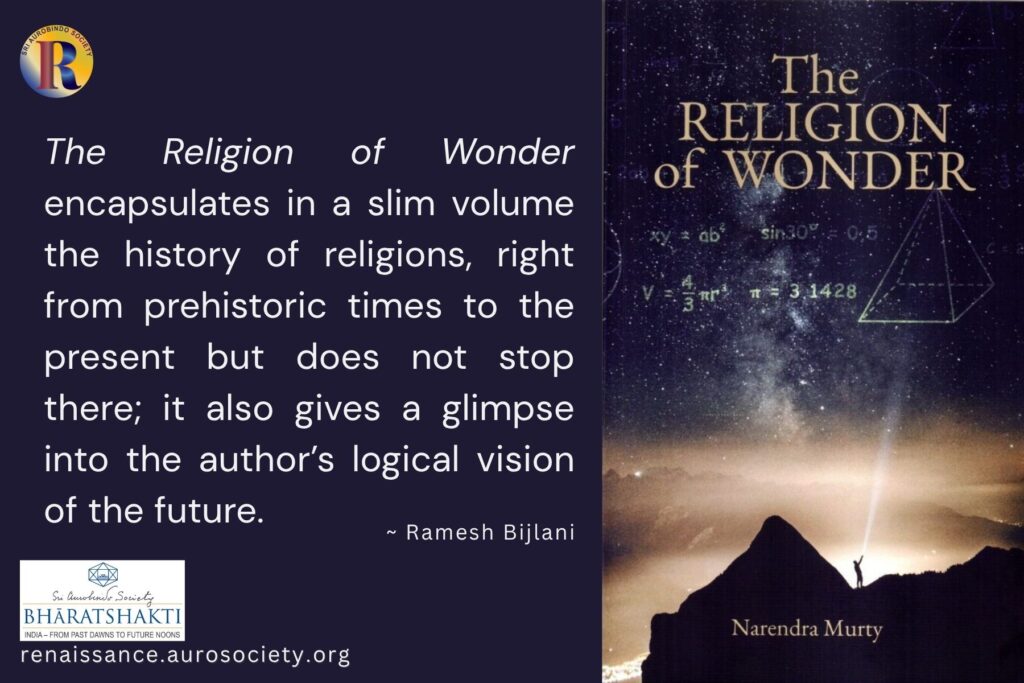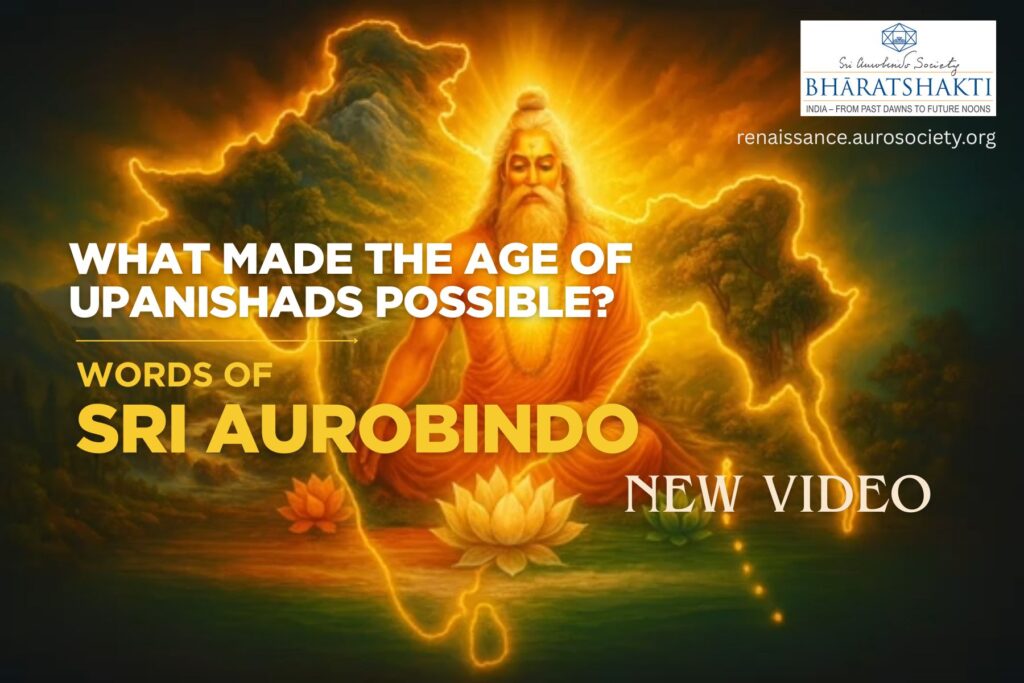Volume II, Issue 6
Author: Sushrut Badhe
Editor’s note: We are happy to share some excerpts from an ebook written by a young sadhak, a devotee of Sri Krishna and Sri Aurobindo. The selections briefly indicate what inspired Sushrut Badhe to take up this project of writing about the Veda in the light of the psychological interpretation given by Sri Aurobindo, and also the divine force which guided him through this journey.
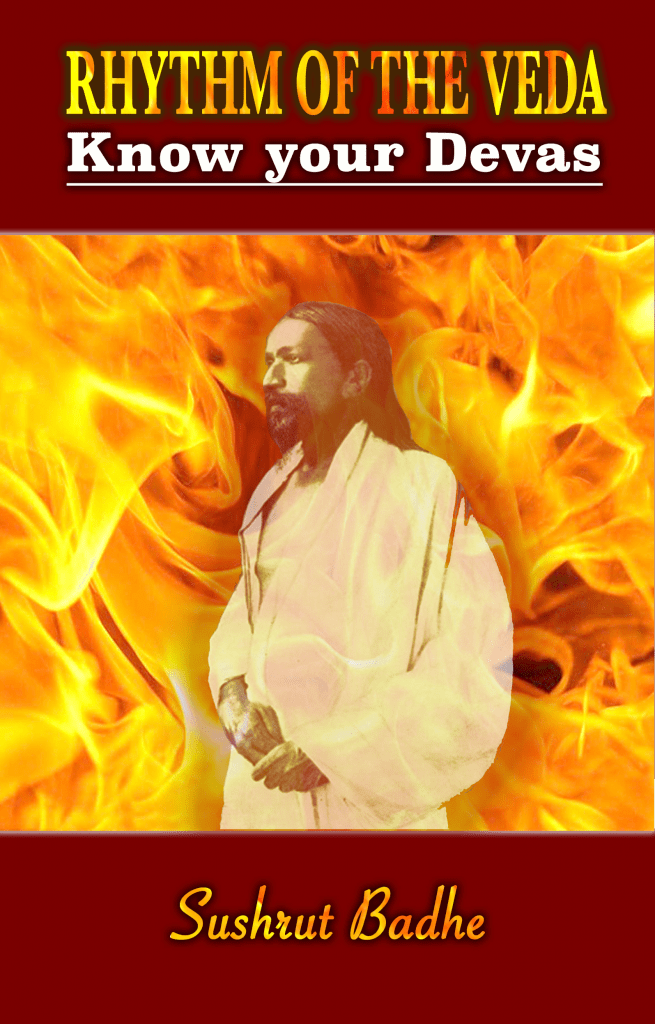
PREFACE
Normally, it would be considered illogical and foolhardy for a mechanical engineer with no formal education in either Sanskrit or literature to dare to attempt a commentary on the oldest scripture known to mankind. But then again, nothing that has happened in my life from 2010 onwards, ever since I met my teacher, Sri M. R. Damleji, has conformed to the definition of normal logic.
My first introduction to the Veda came when I heard him chant an Agni Sukta during a yagna and I was most intrigued by the rhythm of his chanting and overwhelmed when he explained to me the meaning of the sukta in the light of Sri Aurobindo. And on that day, I learnt that I, like most Indians, was genetically linked to the mystic seers or Rishis of the Vedas by virtue of one of the many ‘Gotras’ that identified the bloodline of the founding Rishi. To learn that the blood of the Vedic Rishis flowed through my veins suddenly made the Rishis seem a little less distant. But this was not the reason why I chose to try to write a commentary about knowing the Devas of the Rig Veda.
In 2012, I had an opportunity to engage in a collaborative study of the therapeutic effect of Vedic Chanting on the behaviour of children with autism where my main task involved sitting along with the children and listening to Vedic hymns chanted by Damleji thrice a day for a period of more than four months. The study went on to receive “The Best Poster” in an international scientific conference at ISHG, Ahmedabad in 2014. At home my parents also noticed distinct behavioural changes in me. But this too was not the reason why I chose to try to write a commentary to know the Devas of the Rig Veda.
In 2013, Damleji was kind enough to allow me to accompany him on a spiritual journey to different sacred places in Maharashtra. Among the places visited, the sacred tree or Ajaana Vriksha at Alandi that grew over the Sanjeevan Samadhi of the great realized one, Sant Dnyaneshwar, also revered as Mauli or Mother all across Maharashtra, deserves a special mention.
Mauli, despite being an enlightened soul, was ostracized by the society throughout his childhood and mocked by the orthodox Vedic scholars and elders initially, but was later on acknowledged by the entire village when they witnessed his many miracles. The story of how he made the Vedic hymns emerge out of the mouth of a buffalo before an assembly of the learned fascinated me the most and I was excited to visit the Ajaana Vriksha tree. I had just learnt that eating even one leaf that falls from the sacred tree improves one’s intelligence. Recognizing my scarcity, I ate four leaves and prayed to Mauli for a miracle.
A couple of years later I succeeded in writing a version of the Bhagavad Gita and in the subsequent year also the Isha, Kena, Manudkya and Sri Aurobindo’s Upanishad in rhyme. These were declared records by India Book of Records, Limca book of records and other record verifying organizations. But neither was this the reason why I chose to try to write a commentary on knowing the Devas of the Rig Veda.
To be honest, the real reason remains unknown to me. I haven’t interacted with the Devas like the Angiras sages did in their hymns or seen their celestial carriages traversing the skies like the Atris and other Rishis. I am like a blind man looking up to the sun. I cannot see the Rig Vedic sun but can certainly feel the warmth of its rays falling upon me and also point to its direction. I haven’t been capable of seeing the brilliance of the Devas with my eyes, but I certainly have perceived their warmth through the hymns of the Rishis and hence can say with certainty that the forgotten Vedic deities of India are not asleep. They are very much in action all around us as they have always been.
It is this experience that I have sought to share with my readers through this small book. . . .
Eleven prominent yet lesser-known Vedic Dieties of the Rig Veda have been selected and their hymns have been versified in rhyme with a brief commentary on the symbolism and inner meanings. The rhyme rendition and description has been done solely in the light of Sri Aurobindo’s ‘Secret of the Veda’ and simple illustrations have been provided for picturing the functions of as many Gods as possible. A short bio of the composing Rishi has also been given at the end of each hymn. The aim is to provide the present generation of readers with a key to connect with the Vedic Network of the Rishis and the Devas.
See our digital exhibit:
Bhārata — The Land of Seers and Sages
PROLOGUE
For Nine days, the inferno at Nalanda burnt
Hoping to erase all the sacred texts that were learnt
Other sanctums of learning too were then raided
Knowledge suffered distortions and struggled unaided.
Over generations this loss compounded and spread
The hidden wisdom was lost – unheard and never read
The devilish ploy was that the light be forever buried
And down the ages nothing was passed or carried.
But little was really known or understood by man
That all of this too was part of the grand plan
Several sacred texts were destroyed in time’s course
But no force on earth could touch the divine source.
From the same planes where the truth was heard
Would reverberate once more the first word
Newer Vedas too would once more come –
From this churning the world too shall immortal become.
Across the oceans shall burst the volcanoes of light
Flooding and cleansing the plagued lands of blight
The Sons of Angiras, Atri and the other Rishis shall rise
And one hotar shall perform Vishwajit Yagna – the final sacrifice!
Don’t miss:
Sushrut Badhe and Dr. Bhawana Badhe on Krishna’s Butter Project
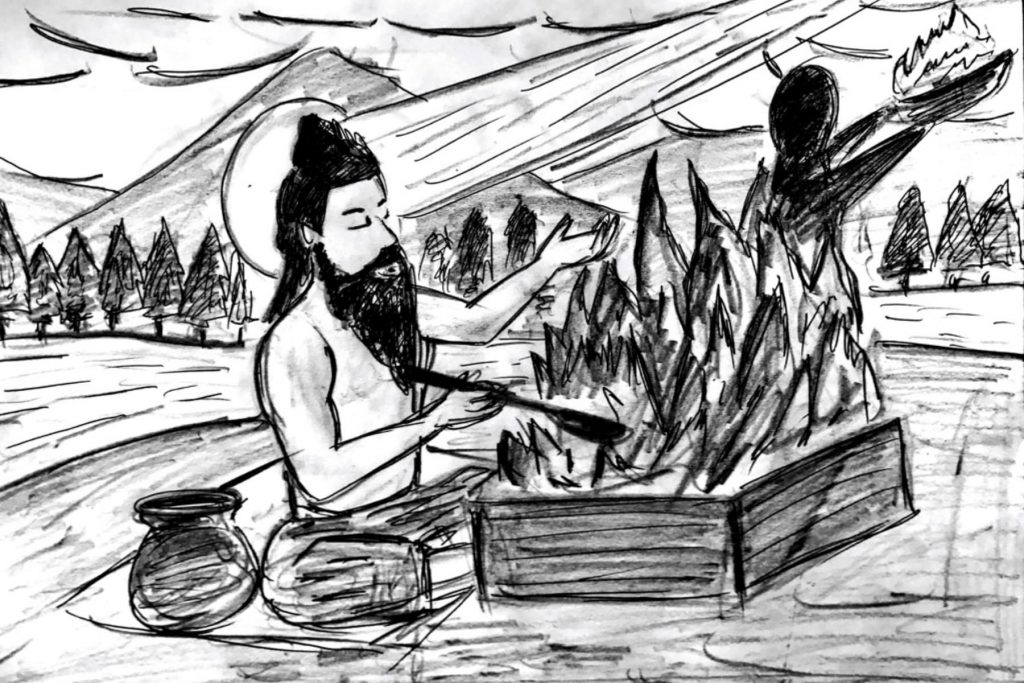
THE HYMNS, THE RISHIS & THE DEVAS
“Is there at all or is there still a secret of the Veda?”
With this profound opening question, Sri Aurobindo began his treatise on the primordial text whose very name means knowledge, ‘The Secret of the Veda’. A century has passed since his first translations and writings on the Veda appeared in ‘Arya’ and yet we have for some incognizable reason distanced ourselves from the Vedas — the seed scriptures that have shaped the developments of science, philosophy and art over the ages. A hundred thousand temples, and this figure is by no means an exaggeration, have sprung up across the length and breadth of our temple land but neither their sanctums nor their walls have offered space to the Vedic deities who were antecedents to all the Gods deified in the sacred structures.
While the text of the sole surviving recension of the complete Rig Veda, whose authenticity has been verified and accepted, is very much with us, the ancient Vedic Sanskrit used in it has ceased to dance on the tip of the tongues of even the most learned amongst modern Sanskrit scholars further distancing the already alienated masses away from the real meaning of this powerful spiritual treasure.
European scholars and philosophers, with and without questionable motives, have worked laboriously in fixing and assigning meanings to the hymns contained in the scripture and have not been very successful in their attempt as is evident from the gross inconsistencies arising out of their purportedly rational interpretation as clearly highlighted by Sri Aurobindo in his treatise. The multi-roots of the Sanskrit words have been used far too liberally to create a narrative suggesting that the hymns and Vedas are but ritualistic invocations of barbarians to different Nature-elements deified as fierce and all-powerful Gods.
The interpretation that the sages sought to invoke the Elements only to grant protection from enemies, wealth and food for their respective clans can be declared to be as far as possible from the truth. While reducing the motive of the sages and composers of these hymns to a desire for food and wealth is absolute sacrilege, the entire blame of this monumental blunder cannot be passed on to foreign shoulders.
“The modern theory of the Veda starts with the conception for which Sayana is responsible, of the Vedas as the hymnal of an early, primitive and largely barbaric society crude in its moral and religious conceptions, rude in its social structure and entirely childlike in its outlook upon the world that environed it.” (Sri Aurobindo, CWSA, Vol. 15, p. 25)

Click HERE for more books featured on Renaissance.
Indian scholars, on the other hand, unwittingly created an opening for the scholars of the West to foray into the impregnable and confounding philological fortress of the scriptures, stamp their interpretations upon them and validate them by retaining the interpretation of the Indian scholars as their reference. A number of factors made this intrusion possible and one can only hypothesize that the prevalent social and cultural transitions led to the purely ritualistic interpretations of the Indian scholars.
A great change was taking place in ancient India in the post-Vedic Era. The sun of the age of intuition was setting and a new age of reason was beginning. Even the Sanskrit language, which was a lot more symbolic and poetic in the Vedas, began to be replaced with a Sanskrit that was more focused on philosophy and structuring. The focus shifted from interpreting the Vedas to founding the Upanishads or the Vedanta and as Sri Aurobindo points out a dichotomy of Veda and Vedanta began to manifest.
A sharp practical division came into being, effective though never entirely recognized in theory between Veda and Vedanta, a distinction which might be expressed in the formula, “Veda for the priests, the Vedanta for the sages.”
(Sri Aurobindo, CWSA, Vol. 15, p. 15)
The Upanishadic age was soon followed by the age of the Puranas which eventually led to greater use of different regional languages for composing religio-spiritual literature. The rise of Buddhism also furthered the side-lining of the Vedas; newer religious systems began to occupy a prominent place in the society and the Sanskrit language too began to lose prominence among the masses. Only a selected group of Pandits or scholars remained who continued to pass on the text religiously from generation to generation for they understood that the texts were sacrosanct and thus diligently guarded their sanctity and passed them on word for word and sound for sound.
While their scrupulous attachment to adhering rigidly to lexicon and diction ensured that the Vedic text was preserved, their approach, which was often despotic and led to fear-mongering, prevented the masses from touching the scriptures. For instance, we have in the Brahmanas, the story of a sage Twashtri who while performing his sacrifice chanted the words ‘Indra’ and ‘Shatru’ in the wrong notes with catastrophic results because the wrong pronunciation completely reversed the meaning of the chant. Instead of empowering his son to slay Indra, he caused his son to be slain by Indra, thus highlighting the drastic consequences of hymns of invocation wrongly uttered.
While we are without doubt grateful that these texts have been preserved in their original forms, in the handing over of the Vedas from the sage to the priest and from the priest to the scholar, great damage was done. The original meaning of the sages was lost and only the ritualistic interpretation of the priests remained in the scholastic rendering of the Vedas.
For even in the earlier days of classical erudition the ritualistic view of the Veda was already dominant, the original sense of the words, the lines, the allusions, the clue to the structure of the thought had been long lost or obscured; nor was there in the erudite that intuition or that spiritual experience which might have partly recovered the lost secret. In such a field, mere learning, especially when it is accompanied by an ingenious scholastic mind, is often a snare as a guide.
(Sri Aurobindo, CWSA, Vol. 15, p. 19)
If we were wholly to accept the Western Indologists, we would have to come to the conclusion that the Vedas are naught but a collection of hymns composed by barbarous and fair-skinned Aryans who wanted their Gods in whose favour the hymns were chanted to grant them cows, horses, rich food and prosperity and drive away the dark-skinned Dravidians who were always trying to steal their cattle.
And if we are to wholly accept the likes of the scholastic Indian renditions, the hymns are naught but a collection of ceremonial rituals to various Gods which needed to be performed meticulously and without any flaws to ensure that the Gods be merciful and pleased so that they grant the priest of the sacrifice and all the others involved longevity, prosperity and plenty of food and cattle.
In both these interpretations, a very important factor is altogether ignored: the very composers of the hymns, the realised sages. The premise that the Rishis or spiritually accomplished Vedic Sages composed the hymns to gain material possessions seems absurd and banal, making one wonder how this interpretation came into existence in the first place. This is where the multi-roots of the words of the Sanskrit language serve as the key to solving the many inconsistencies arising out of arbitrary assignment of English meanings to Sanskrit root words.
In ‘The Secret of the Veda’, in the chapter titled ‘The Foundations of the Psychological Theory’, Sri Aurobindo has successfully deconstructed the myth furthered by the misattribution of the fight between darkness and light mentioned in the Vedas to an Aryan-Dravidian battle, and has clearly established that the Vedic Hymns are actually formulae or blueprints of realizations of the Rishis that were recorded after the attainment of personal victories on spiritual planes with the aim for providing a key for future seekers to attain the same. While a cursory glance reveals a simple outward ritualistic meaning, the cryptographic nature of the hymns becomes clear to us when we observe the symbolism embedded in the verses with a careful and trained eye.
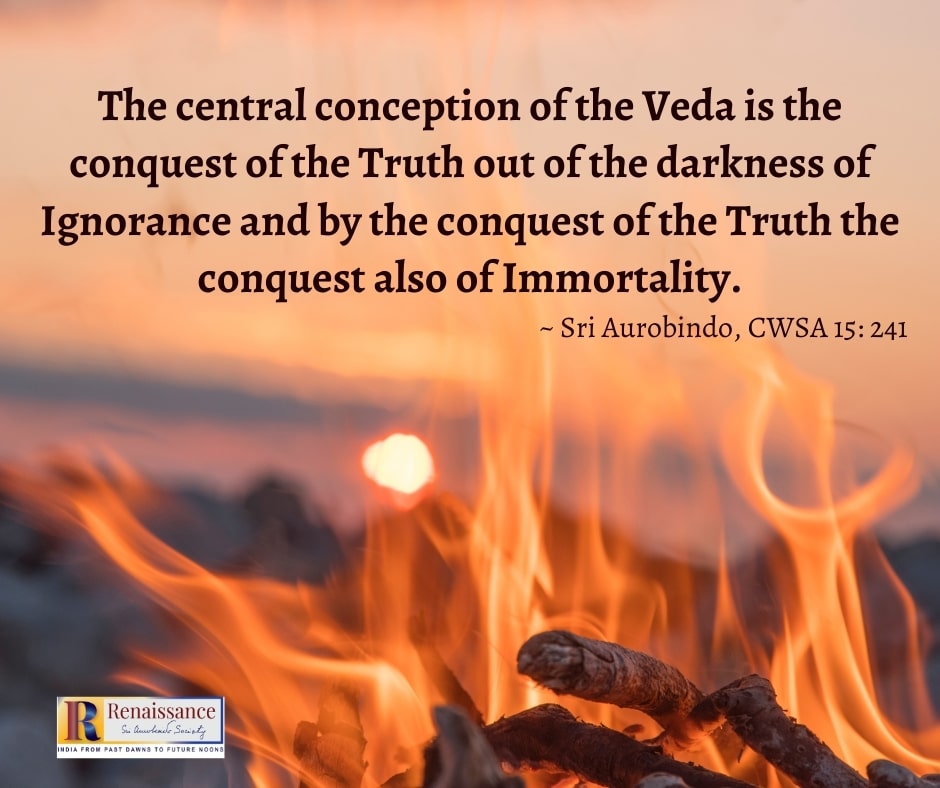
“We have concluded that the Angiras Rishis are bringers of the Dawn, rescuers of the Sun out of the darkness, but that this Dawn, Sun, Darkness are figures used with a spiritual significance. The central conception of the Veda is the conquest of the Truth out of the darkness of Ignorance and by the conquest of the Truth the conquest also of Immortality.”
(Sri Aurobindo, CWSA, Vol. 15, p. 241)
The legends of the Angiras, Panis, Vritras and Dasyus are to be treated as parables and their symbolism is to be discerned if we are to understand the Veda in the true Spirit. It is this spirit that I wish to connect to, and so, using the key provided in ‘The Secret of the Veda’, I will attempt to break the seal stamped upon the Veda by the present-day ritualistic interpretations. While I have no qualms about my capacity or my erudition as I am fully aware that I do not hold the necessary academic qualification to comment on these sacred scriptures, I understand that no institution can deny me the right to attempt a poetic transcreation of the hymns of the Rig Veda.
The Marathi saint Tukaram, who was chastised by the society in his earlier days for his interpretation of the Vedas and later on revered as a realized soul, in the compilation of his works titled ‘Tukaram Gatha’ lashed out very fiercely at the orthodox conformists and scholars of the ritualistic school of interpretation.
वेदाचा तो अर्थ आम्हांसी च ठावा । येरांनी वाहावा भार माथां ॥
खादल्याची गोडी देखिल्यासी नाहीं । भार धन वाही मजुरीचें ॥
~ Tukaram Gatha, 2266
“That meaning of the Veda, Only I claim to verily understand and know
Carrying the burden of the texts on their heads, the others can go
The experience of sweetness that comes from taste, by seeing one cannot share
May the porters for their labour of carrying the goods, receive their due fare.”
Quoting him, I begin my journey to connect myself and my readers with the Spirit of the Rig Veda — its Hymns, Sages and the Devas.
To get this book on Kindle, click HERE.
To contact the author: [email protected]
~ Cover image: Public domain, source unknown


